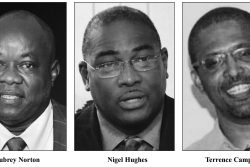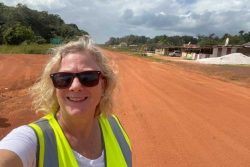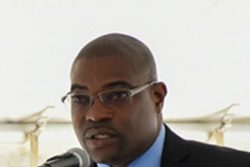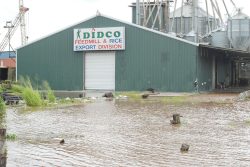LONDON, (Reuters) – The Olympic door for Russian track and field athletes remains firmly shut, Sebastian Coe said yesterday, but he also offered them a glimmer of hope by acknowledging “the world changes” and highlighting a working group that is monitoring the situation. Earlier this month the International Olympic Committee (IOC) said that Russians and Belarusians who qualify in their sport for the Paris 2024 Games can take part as neutrals without flags, emblems or anthems, changing the position of their original blanket ban following the invasion of Ukraine.
That followed a recommendation in March that put the onus on international sports federations to decide, with most of them moving to allow the two countries’ athletes to return. Athletics, the Games’ biggest and most popular sport, immediately responded by saying they would keep their ban in place, but Coe seemed less certain when speaking to journalists on Monday. “There is no change,” he said. “The most important thing is that the autonomy and independence of international federations to make these judgements is really important. We made a judgement which we believe was in the best interest of our sport. “Do I see anything changing in the foreseeable future? I don’t know. The world changes every five minutes, the situation could change. We do have a working group that is monitoring the situation within the sport and it will advise and guide (the policy-making) Council on what circumstances might need to exist for any exclusion to be lifted.” The Olympics will be sandwiched between three editions of the world championships (2022, 2023 and 2025) and Coe said his sport was in a great place after a “stupendous” year.
“I can’t remember a season that has delivered more high quality performances across a broader bandwidth of disciplines,” he said. “I think Budapest was the best world championships we’ve ever had and there were seven world records in an outstanding season.”
However, he also again addressed the need to keep his sport relevant to the next generation of fans, pointing to the upcoming Netflix series that followed the leading contenders in the men’s and women’s 100 metres this year.
At the other end of the excitement scale he identified the “horizontal jumps” – long jump and triple jump – as something that can be improved to give a better spectator experience.
“At the world championships we did a lot of research, testing on our fans in the stadium and watching on TV and we even had sort of pulse rate monitors,” Coe said. “So we know a lot more about what excites them and what leaves them a little flat on occasions.
“That doesn’t mean we are going to say there’s no place for those things in our sport, but we feel that there is work we can do to make them more attractive.
“Something like 30 or 40% of all horizontal jumps end up in a no jump. That’s a lot, and there’s an awful lot of sandpit raking with a cone sitting on a runway. So how can we reduce the amount of downtime?”
Coe played down recent concerns over the location of the two jump pits at the Paris Olympics, which are also used in the heptathlon and decathlon.
“I don’t think this is going to be a major issue, it’s just the nature of the retractable seats,” he said. “There is a challenge around one of the pits and you really don’t want to be surviving on just one pit.
“I don’t mean this dismissively but there are a lot more complex issues at an Olympic Games that are probably of a more demanding nature for the organisers.”









